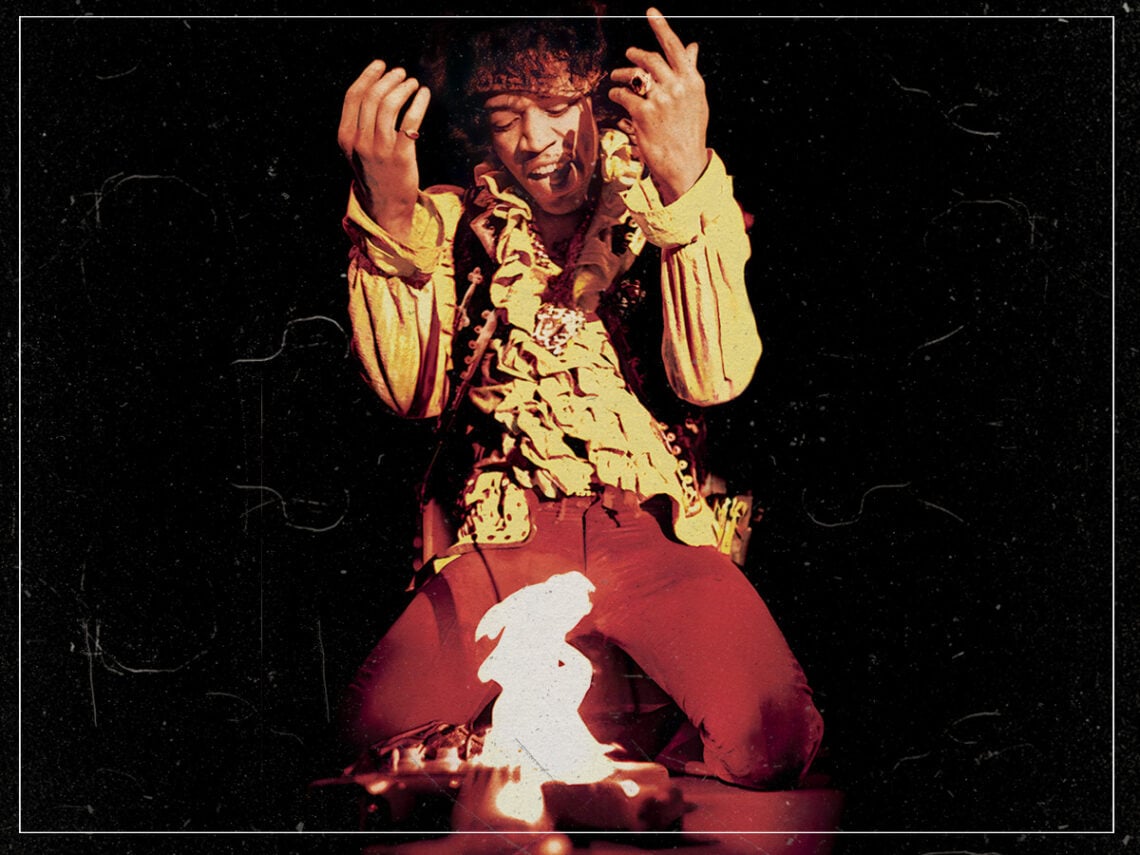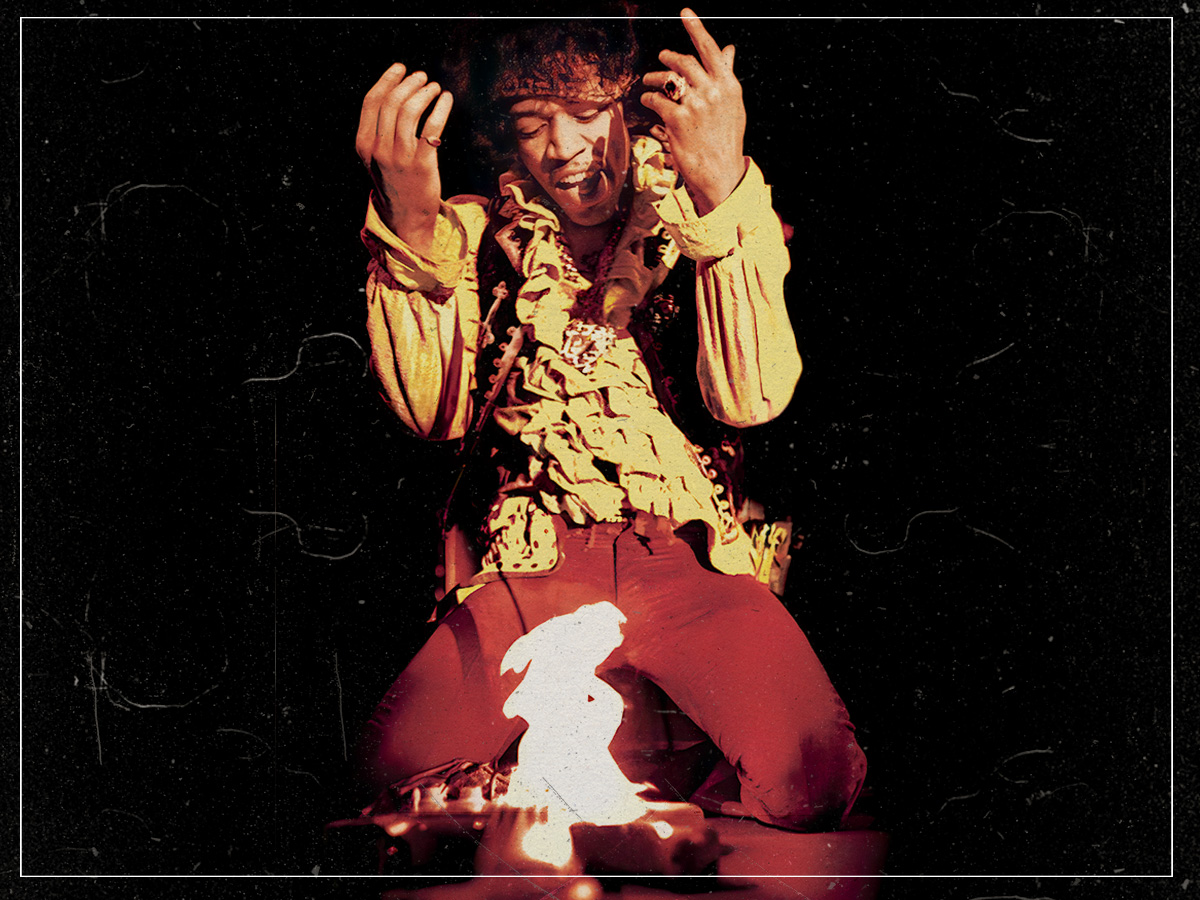
(Credits: Far Out / Sony Music Entertainment)
Sat 7 June 2025 13:00, UK
The London blues scene of the mid-1960s was one of the most absurd hotbeds of instrumental talent you’ll ever see. In terms of sheer musicianship, it’s probably rivalled by what was going on over in Detroit at the same time. In terms of sheer guitar devotion, LA in the 1980s probably is in with a shout, but in terms of star power, few periods have it beat. Eric Clapton. Jimmy Page. Jeff Beck. Brian Jones. Peter Green. No doubt hundreds of others who didn’t hit the big time. Then Jimi Hendrix ended all of them.
He came over at exactly the right time, too. The Seattle native arrived at The Big Smoke in 1966, when the scene had settled into a comfortable little rut. Clapton was king, Beck was his right-hand man, and Green was the connoisseur’s choice. Everyone else was content to jam with each other in a particularly self-satisfied manner, in front of clubs and bars full of starry-eyed devotees. Pretty much everyone was convinced they’d reached the pinnacle of what you could do with the blues band, and that was fine by them.
At least, until Hendrix showed up. On September 26th, 1966, Jimi Hendrix played his first gig in London. His slot at the ‘bijoux Mayfair’ nightclub, the Scotch of St James, made Hendrix not just an overnight sensation but something of a ‘glitch in the matrix’. It wasn’t just that this guy was almost the mirror image of the white, British, Gibson-worshipping bloozehounds that made up the scene. He was, somehow, doing it better than them?!
That was the one thing that no one in town had prepared for. The status quo had been set, and no one had considered for a second that anyone would come and challenge it, much less change it. The shockwaves rippled immediately, and when I say “overnight sensation”, I’m not kidding. Within a week, Hendrix was introduced to Clapton, and that same night, Jimi joined Cream onstage for the performance of ‘Killing Floor’ that for a generation of blues fans killed God.
How did the blues scene respond to Jimi Hendrix?
This was no fluke either. Hendrix and his newly formed Experience would keep playing gigs in London’s myriad club scene, and each would be as spectacular and boundary-pushing a gig as the last. Every. Single. One. Few felt this harder than Eric Clapton. He was set to take the pop world by storm with Cream. However, within months of his band forming, his status as the undisputed “best guitarist in the world” wasn’t just challenged, but stolen outright. In public, no less.
Now, of course, no one thought any less of Clapton and his work, but that hardly mattered. His famously large ego was in tatters, and he did the strangest thing to cope with it. While some would have disappeared into their work and a whole lot more would have disappeared into various substances, Clapton did something that, seemingly, no man in the 1960s was capable of. He reached out to others and made new friends.
In an interview for the documentary A Film About Jimi Hendrix, The Who’s very own Pete Townshend talked about how, soon after Hendrix arrived in London, he got a call from Clapton inviting him to the cinema. Having never spoken to him before, Townshend accepted. In the interview, he said, “During the movie, we started to talk about Jimi Hendrix, and we decided that we both really liked him. Suddenly, out of the blue, we had a very strong bond of friendship.”
Heartwarming, to be sure. At least on the surface. Townshend admits that the friendship “ended as soon as Jimi split England”. Townshend speculated that the bond “came about because Jimi threatened us both, in a way, but at the same time he also entertained us both”. Over time, the friendship between Clapton and Townshend would deepen, yet it is strange to know that it may never have happened had Jimi Hendrix not made his name in London.
Related Topics
Subscribe To The Far Out Newsletter
